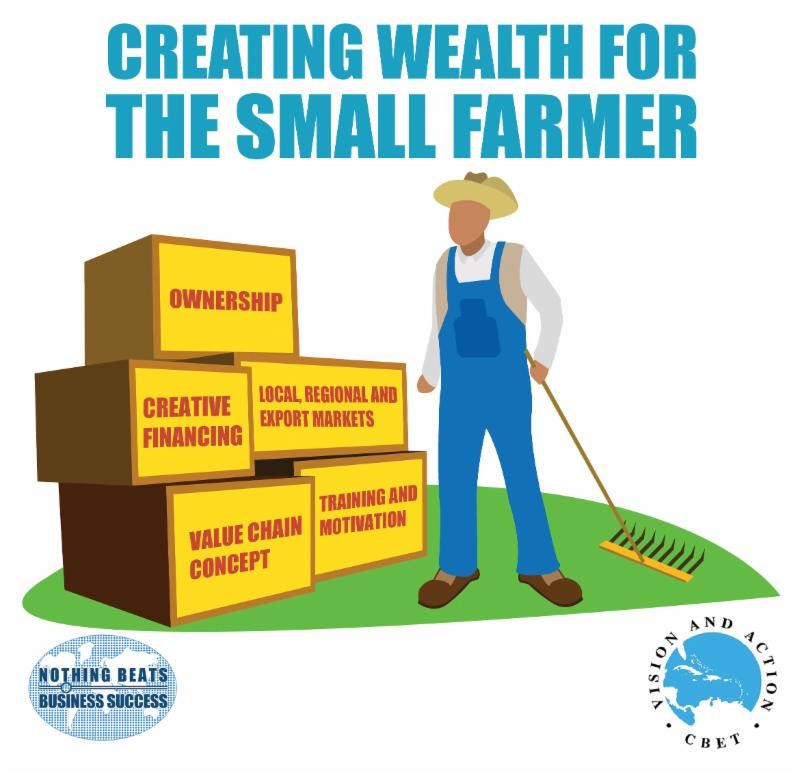“Let us do it – full of belief, confident that we are presentable inside and out.”- Hebrews 10:22
Access to arable land is an asset with which each country is blessed, albeit with varying quantity and quality. Small farmers have traditionally been subsistence farmers utilizing arable land to produce enough food initially to sustain their families with spill over on the local market. How can the nation mobilize small farmers, as an asset, to exploit the opportunity of the “global market pull” for exotic agricultural products and contribute to enhancing the small farmers’ own prosperity and happiness as human beings and that of the nation as a whole?
The first step is to have faith that the system of small farming can shift from subsistence farming to export farming.
The second step is to establish a National Agricultural Trading Trust, sponsored by the public and private sector, to act collectively on behalf of small farmers (entrepreneurs) and benefit from economies of scale.
The third step is for the Trust to introduce the value chain concept, the links of which efficiently and effectively trade product from a group of small farmers to the final consumer. The main links are production to the farm gate, post harvest handling, packaging, trading, shipping, wholesaling and retailing. Traditionally, the small farmer’s final sale is at the farm gate. At each link a service is provided and the more services with which the Trust can negotiate an equity (ownership) position, the greater the farmer’s share in the final price from the consumer.
The fourth step is for the Trust to appoint a value chain coordinator who is responsible for managing all the activities of the Trust on behalf of the small farmers.
The fifth step is for the Trust to build on the small farmer’s activity to sell product to the local market, where he disposes of the crop at the farm gate, and then to shift gear to an export focus (regionally or extra-regionally). The basic principles which are critical for export sales are competitive pricing, high quality, continuity of supply and timeliness of delivery. To compromise on these principles can mean the loss of the export market.
The sixth step is for the Trust, executed by the value chain coordinator, to identify sources of funds, both developmental (through government) and investment (private sector), to grow the trading business into a profitable enterprise. The Trust and the investor will be responsible for the joint risk which will be mitigated by the value chain coordinator who provides comprehensive shepherding services, including training and motivation for the farmers and other value chain stakeholders.
The seventh step is to negotiate with a financier to advance funds for material inputs whereas the farmer organizes the labour. When the crop is grown, the farmer is then paid for the labour through another negotiated advance from the financier. For each step in the value chain, the financier advances funds for post harvest handling, packaging, trading, paying the value chain coordinator and shipping at the end of which a cheque is collected from the buyer and the investor and farmers share the profits.
The comfort for the financier in this style of operation is the market contract between the Trust and the buyer and the fact that the value chain coordinator is shepherding the process at each step collectively for the small farmers. There may be other negotiated arrangements, including warehousing receipts and factoring of receivables that may provide additional comfort to the financier and the Trust.

The example of the small farmer is used here but we could extend the ideas more generally to that of any small business.
Let us engage in these innovative thoughts as we seek to utilize our available assets to revitalize economic growth.
(Dr. Basil Springer GCM is Change-Engine Consultant, Caribbean Business Enterprise Trust Inc. – CBET. His email address is basilgf57@gmail.com and his columns may be found at www.cbetmodel.org and www.nothingbeatsbusiness.com.)
